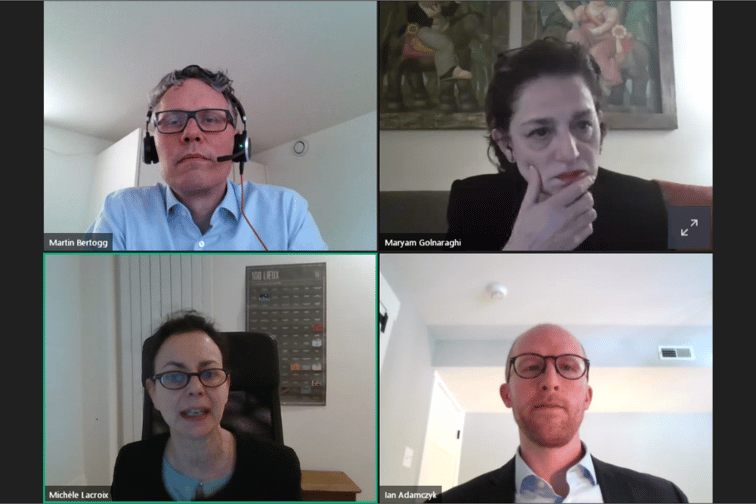

The last 12 months have gone a long way towards emphasising the need for insurance companies to work together across the value chain - from clients, to brokers, to regulators, to data providers. Across sectors including cyber insurance, flood insurance and terrorism insurance, the link between collaboration and net positive outcomes for the industry and its customers is clearer than ever.
It was with such collaboration in mind that the Geneva Association (GA) Task Force assembled, bringing together 17 of the largest P&C and life insurance companies to discuss their rich range of experiences from across the balance sheet. Moderating a panel discussion on the findings of the task force’s first report, Maryam Golnaraghi, the GA’s director of climate change highlighted how the initiative seeks to bring the industry together at a new level to consider how to tackle the changing requirements of climate change risk assessment.
“Our first report provides the very early foundations of how, as a company, you need to work across the balance sheet to bring this together,” she said, “instead of just jumping into a quantitative exercise without knowing the decision objective of it, and why was it designed in the first place. We hope this report lays out the foundations of this, but it is a work in progress. It’s going to require extensive collaboration, not only within a company but also across the industry, across [multiple] lines of business but also with various other stakeholders; regulators, data providers and the scientific community.”
What the task force essentially summarised, she said, is that the industry needs to take a holistic view of its balance sheet in order to gather a good sense of how climate risk impacts the balance sheet across both the short- and long-term time horizons. The idea is to focus on asking the right questions and determining the right objectives, and then establishing what tools are required to solve the problem at hand.
Martin Bertogg, Swiss Re’s nat-cat and cyber head, highlighted that the (re)insurance industry has a few great assets that it utilises to deal with extreme weather. However, he said, when it comes to the climate change discussion, there is a great deal more uncertainty on how to deal with it, and what the right questions to ask are, and the right objectives to establish.
He hopes that the industry will soon take some steps in establishing these key objectives and questions - whether they’re about insurability, or reserve setting, or risk management.
“I think education, communication and collaboration across the industry will continue to be key,” noted Ian Adamczyk, Prudential’s VP of international regulatory and governmental affairs. “And we’ve experienced that first-hand through the work of the task force. And I think another important item to note is that it’ll be equally important for that collaboration to extend between the industry and the regulatory community as well as other stakeholder groups that are active and engaged in this space.”
SCOR’s head of group investment, risk and sustainability Michele Lacroix agreed on the need for collaboration but added that the industry also needs to take on board the data challenge it faces. The industry will never be able to push the envelope if it cannot rely on data, she said. Transparency is key, and insurance companies need to make every effort to obtain the right information and to work to make sure all methodologies align. Otherwise, it will be everyone working on their own side with no grasp of the comparable information that can be so useful when steering a portfolio.
Looking to the future, Golnaraghi noted that the task force will be focused on finding the right questions to ask that will enable the industry to build the right tools for tackling climate risk. It is publishing a report detailing its assessment of regulatory exercises and will be meeting with regulators to share perspectives and learn more about regulatory objectives.
“Next steps for the task force include coming up with a very in-depth matrix of decisions that life and P&C insurers need to ask themselves on both sides of the balance sheet,” she said. “We will look at the risk matrix and, subsequently, we will delve into scenarios that make sense for the insurance industry and then look at what tools are needed and what gaps are in the toolbox we need to develop.”
